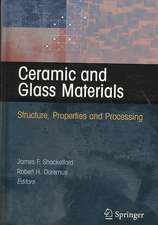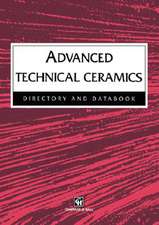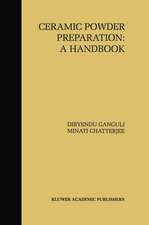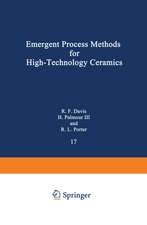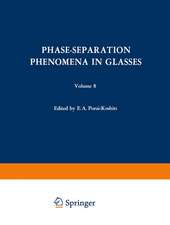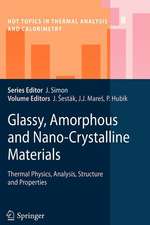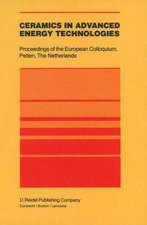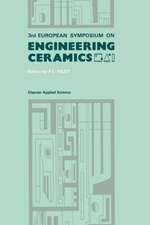Introduction to Glass Science: Proceedings of a Tutorial Symposium held at the State University of New York, College of Ceramics at Alfred University, Alfred, New York, June 8–19, 1970
Editat de L. Pyeen Limba Engleză Paperback – 11 oct 2012
Preț: 447.51 lei
Nou
Puncte Express: 671
Preț estimativ în valută:
85.66€ • 93.08$ • 71.100£
85.66€ • 93.08$ • 71.100£
Carte disponibilă
Livrare economică 01-15 aprilie
Livrare express 15-21 martie pentru 57.68 lei
Preluare comenzi: 021 569.72.76
Specificații
ISBN-13: 9781475703306
ISBN-10: 1475703309
Pagini: 736
Ilustrații: X, 722 p. 77 illus.
Dimensiuni: 152 x 229 x 39 mm
Greutate: 0.97 kg
Ediția:Softcover reprint of the original 1st ed. 1972
Editura: Springer Us
Colecția Springer
Locul publicării:New York, NY, United States
ISBN-10: 1475703309
Pagini: 736
Ilustrații: X, 722 p. 77 illus.
Dimensiuni: 152 x 229 x 39 mm
Greutate: 0.97 kg
Ediția:Softcover reprint of the original 1st ed. 1972
Editura: Springer Us
Colecția Springer
Locul publicării:New York, NY, United States
Public țintă
ResearchDescriere
Glass technologists are fascinated by glass; explora tion as well as application of glass is expanding and the influx of documentation is bewildering. There were about 200 papers on just semi conduction in glasses in 1970 and one has to scan about 200 papers a month to sense the pulse of glass science. Yet there are many in industry and education in science or engineering who require or wish to have coher ent, comprehensive and contemporary information on this exciting material "glass. " The Tutorial Symposium offered as an Introduction to Glass Science in Alfred represents an earnest attempt to ful fill this need. It has been designed to provide both broad and technical instruction for participants and readers who are not specialists. Glass is not only a material but a condition of matter: the vitreous state. The topic, there fore, is introduced by a careful consideration of the nature of glass, or the vitreous state. The universality of the vitreous state is now generally recognized: not just a few, but very many structures can be obtained without appreciable crystallization. There is no restricted family of struc tures characteristic of glass formation: as long as crys tallization is avoided, every liquid will solidify to a non crystalline sUbstance. Structural analysis in each case is now to be postulated and has become increasingly successful. The Alfred "Introduction to Glass Science" offers a repre sentative overview of methods and results.
Cuprins
The Vitreous State.- Chemical Bonding in Non-Crystalline Solids.- The Structure of Glass.- The Infrared and Raman Spectra of Glasses.- The Uses of Electron and Nuclear Magnetic Resonance and Nuclear Resonance Fluorescence in Studies of Glass.- General Aspects of the Crystallization of Glass.- Phase Separation of Simple Glasses.- Concepts of Glass-Ceramics.- The Melting of Glass.- Experimental Glass Melting Techniques.- Rheological Behavior of Glass.- Dispersion, Stress-Optical Effects in Glass, Optical Glasses.- The Development of Colors in Glass.- The Fractology of Glass.- The Strength of Glass.- Surface Chemistry of Glass.- The Corrosive Nature of Molten Glass.- Diffusion Processes in Glass.- Electrical Properties of Glass.- Glass To Metal Seals.- Author Index.

